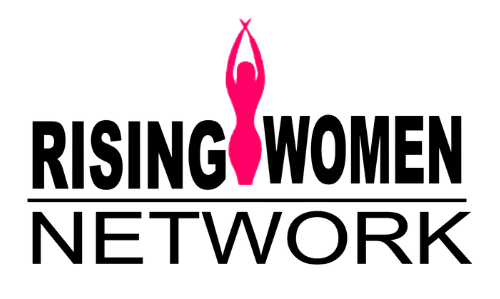The first step in creating your Instagram goals are to set overarching business goals and select metrics to track progress toward them.
Start by setting Instagram goals for your business. These goals are what help keep the lights on and the company up and running. Examples of business goals could include:
- Increasing Brand Awareness: How many people know your business exists?
- Encouraging Customer Loyalty: What keeps people coming back to you (instead of your competition)?
- Driving More Revenue: Businesses need money, right?
Some example business goals that your team could create are:
- “Increase brand audience by 55% by end of the year.”
- “Increase sales of x product by 35% by the end of Q1.”
 The next step in your goal setting process is selecting metrics to track. Some metrics we could select for the goal above might include:
The next step in your goal setting process is selecting metrics to track. Some metrics we could select for the goal above might include:
- Follower growth. Are people finding you and following your profile?
- Post engagement rate. From there, are they actually engaging with your posts?
- Leads generated from profile link clicks. Finally, are they taking the next step and trying your products or services?
The key is select Instagram marketing metrics that directly tie back into overall business goals. Your Instagram goals also need to be S.M.A.R.T (Specific, Measurable, Attainable, Relevant, Timely).
So let’s break down an example:
“We want to increase our Instagram engagement rate by 25% this quarter.”
Here’s how this goal fits into the SMART framework:
- S:It’s specific in the fact that your team knows what needs to be accomplished.
- M:The 50% is a numerical measurement which can be calculated based . You know immediately if the goal was met or not.
- A:Depending on your current engagement rate growth, your team will need to assess if 25% is a realistic goal. For example, if you are already experiencing a 17% growth rate 25% is not necessarily out of range.
- R:Growing your engagement rate on Instagram makes sense because the more your fans engage with your content, the more likely they are to remember you.
- T:You have a set deadline (one quarter) to complete your goal.
Once you have a series of Instagram goals set you can then look to your Instagram strategy to see how the channel can help you accomplish your goals.
For the sake of this post, we’re going to pretend we’re a local bookstore called Rising Women Network’s Corner.
Three smart goals that our marketing team created are:
- Increase the number of younger people following us on Instagram by 50% in 6 months.
- Increase the brand awareness of our store in the area in 3 months by 25%.
- Increase engagement by 50% on each photo that we post.
How can Instagram help your team accomplish those goals?
The first one is simple. Instagram has a high number of young people in its user base. Therefore it would make sense that your team utilizes that channel to reach a younger audience. To prove the strategy is working you can check the in app analytics or Google Analytics and pull demographical data for your Instagram channel.
The second goal requires a bit more strategy and analysis. Brand awareness can come in many forms, and there are many different tools like Google Analytics, Brandwatch and more that can be used to track that growth.
The final goal is quite easy to connect to Instagram due to its nature of being an incredibly visual platform and highly engaging platform. But how can you calculate the engagement rate of each of your Instagram posts.
The formula is:
So if your team has 157 comments and likes on one photo, you would divide that number by your total current followers and multiply by 100.
(100 likes + 57 comments) / 2569 followers x 100 = 6.11% engagement rate.
Which Instagram Goals Should I Focus On?
These next set of goals are broken down into categories: Traffic, Conversion Increases, and Brand Awareness. Your team can decide which metrics and goals to create in order to best achieve your overall business goals.
But what do these categories mean?
- Traffic: How many of your followers are going from your social channels to your website?
- Conversions: How often are you followers following through and completing a set action
- Brand Awareness: How many people are aware of your brand and interacting with you on social media?
For example, if one of your overarching business goals is to increase your customer base by 50%, then it would make sense to create goals that will help drive your social media followers to your website, as that traffic contributes to increasing your overall customer base.
To find your followers, check the information section of your profile.
To find your follower growth scroll down the Insights tab:
To get the metrics on your reach, follower change, website clicks and more you can scroll through the Insights tab:
To get even more insights per post, click see more in the posts tab and click on the post you want to see more in-depth analytics on.
Setting Your Baseline: What’s Your Standard Instagram Marketing Performance?
Now that you know where your metrics are and where to record them you can begin to develop your baseline. The baseline is the starting number that you will determine the growth rate of your goals.
For example, if you had 1,000 Instagram followers and you wanted to grow that number by 25%, you would take 25% of 1,000 since that is your base number.
The easiest way to do this is to track your metrics at the volume you’re going to record them at (daily, weekly, monthly) for the past six months.
Let’s go back to our follower example. Say from April 2017 to October 2017 we saw the following increases in followers on a month by month basis:
- April: 200
- May: 300
- June: 500
- July: 550
- August: 625
- September: 900
- October: 1,000
You would then take the increases for each month, which are:
- 100 followers
- 200 followers
- 50 followers
- 75 followers
- 275 followers
- 100 followers
And average out that number:
1000+200+50+75+275+100 / 6 = 133.33
So your baseline growth for those 6 months is 133.33 followers and your baseline is 1,000.
Set Goals Based On Attainable Percentages And Deadlines
The final part of your Instagram goals process involves taking your baseline growth and your current baseline number and determining how much you want to grow that number by a certain deadline.
So let’s say that you wanted to grow your 1,000 Instagram followers by 15% in a month. 15% of 1,000 is 150 followers. Currently, on average your Instagram account is growing by 13.3% of followers, which means that in order to meet your goal by the end of the month you need to add 16.67 followers this month to stay on track.
Now let’s amp this up a bit. Say your Instagram account has 5,000 followers in January and you’re average growth rate for the last 6 months is about 250 followers per month. By the end of December, you want to double your Instagram audience to 10,000 followers, a 50% increase. To determine your goal you need to do a little bit of math.
So you need to add on average an additional 166.67 followers.
There may be a bit of math involved in your final goal creation but knowing where your data needs to be will help you determine the exact numbers you need to see in order to prove to your boss or your client that your strategy is working.






